#VICI
Text

Vicidia, one of our protagonists! 🌕
The first chapters of Chronos come out April 10th!
#vicidia#chronos#vici#i never remember which name i have her tagged under so shes just gonna get both now
310 notes
·
View notes
Text

📝When I got to draw a macro's barge during Macro March ⚓☀️ :3
2 Hour Sketch for MistGuesta!! 🌟
#fat art#fatfur#fat fur#weight gain#wg kink#macro#macro furry#size play#size art#size kink#whale#Vici#MistGuesta#CommWork#ArllanArt#TimedArt
21 notes
·
View notes
Text

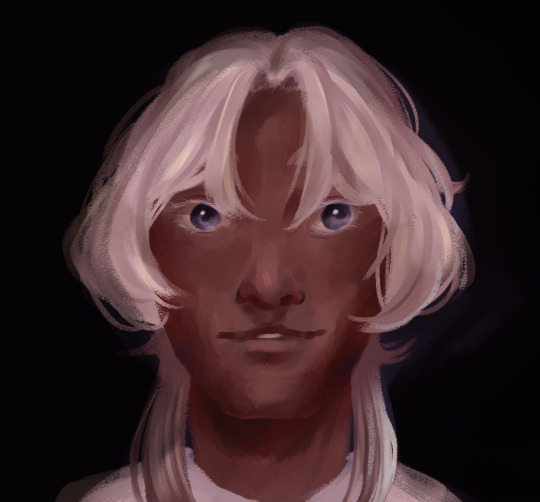
jan 2024/oct 2021
vici redraw
#crebsketch#dumping here for archival purposes again#ocs#vici#my little guy ever <3#i can't believe ive had him for so long.#it will continue too i know. im biased towards him. token edgy oc you make when you are...i forgot how old i was.#very much a “the horrors persist but we stay silly” fella (by going customer service mode at all times)#that is the repression my friend#i scroll up and i forget he's my pfp rn. do not perceive me#i remember making him with purple/black/white color schemes in mind. and going all teehee its the ace flag. i have news for you now girlie#it was not just a bit#im also literally redrawing another piece rn that i did at the same time as the oct 2021 portrait. like i drew em on the same day i remembe
37 notes
·
View notes
Photo
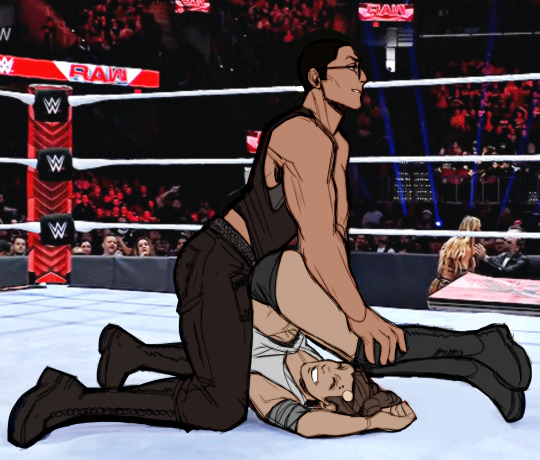
floyd is the kid who acts out for attention and this is the attention hes acting out for @jascnbrody
#my art#floyd#vici#jascnbrody#i havent drawn them in foreverrrr#god i love vici#shes just... *chef kiss* so nice to draw#the og wrestler still didnt have big enough muscles#had to make them even bigger for vici
8 notes
·
View notes
Photo

The 3V
If you are a true roman you salute with the 3 fingers: Veni. Vidi. Vici.
I know that you are waiting the twin asses, and I want to let you know that I'm working on it.
Posted using PostyBirb
2 notes
·
View notes
Text

Vici Properties Inc Shines Bright with Impressive Fourth Quarter Results https://csimarket.com/stocks/news.php?code=VICI&date=2024-02-23120221&utm_source=dlvr.it&utm_medium=tumblr
0 notes
Text
BUBBLE BUTT SEXERCISE
Avery Moon and Cameron Minx girls teen sluts need cocks
blondie Kayleigh Coxx takes an anal pounding from older guy big cock tranny
Putas culonas
Kinky czech teen opens up her tight pussy to the peculiar
Elegant minx Roxy C gets fucked nicely
Gorgeous trans amateur fingering her pussy
Socando a buceta da novinha da academia de novo
minha esposa e sua amiga tem um cara que come as duas
elizabeth hunny
#n64#Krishna#circumambulating#nonconformest#fibroblast#achenocarp#bindle#Vici#paguroid#Shayne#echo#rained#creativity#unabsorbent#lanvin#complaint#unsurveyable#six-gated#Calypso#puppethead
0 notes
Text
speedpaint of this piece
#ocs#crebsketch#dumping here for archival purposes again#hugo#vici#Technically. i never finished painting him. but thir really reminds me that was a Fun brush i used back then#i gotta bring em back#and fun colors...im pretty happy with mine now but oooooh.#glad i am at a stage i can look back at old art and be. satisfied at my progress. it is a bit of growth on my part
19 notes
·
View notes
Text
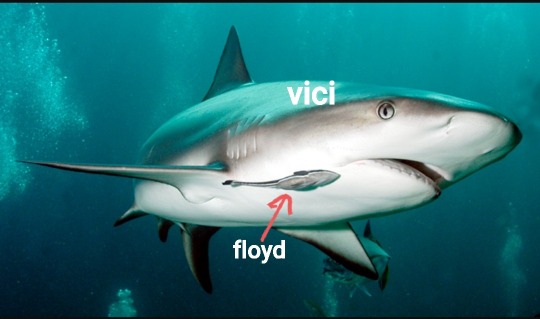
yea that's
3 notes
·
View notes
Text
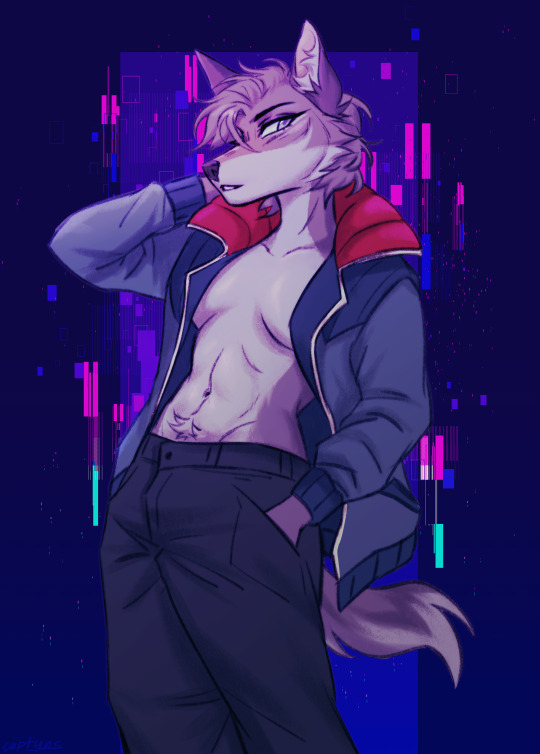
somewhere avelus is wondering where the hell his clothes are
1K notes
·
View notes
Text





vico ortiz was already too powerful... and now you give them a SWORD?
#i… on my knees#our flag means death#ofmd#ofmdedit#ofmddaily#userbbelcher#chewieblog#userkristi#userocida#agentplant#fandom#eccc#nonbinary#gay#lgbt#lgbtq#lgbtqia#veni vidi vici they came they saw they servedddd#rhys and samba’s faces ;______;
5K notes
·
View notes
Text
Geliat Kebangkitan Pariwisata Bali Melalui Herborist Bali Fashion Carnival 2022

BALIPORTALNEWS.COM, TABANAN – Sektor pariwisata di Indonesia, khususnya Bali, kembali menggeliat pascapandemi. Hal tersebut ditandai dengan ramainya turis lokal maupun mancanegara yang kembali mulai memadati objek-objek wisata di Pulau Dewata sehingga berdampak pada kondisi pariwisata dan ekonomi kreatif di sana.
PT. Victoria Care Indonesia Tbk (VICI) melalui merek Herborist bersama YMM Event Organizer melihat kesempatan tersebut dan menunjukkan komitmennya untuk mendukung perkembangan dunia pariwisata dan ekonomi kreatif melalui program-programnya, salah satunya adalah Herborist Bali Fashion Carnival 2022.
Berlangsung sejak Juni yang diselenggarakan di Secret Garden Village, Bedugul, Bali, Herborist Bali Fashion Carnival 2022 merupakan sebuah ajang parade fashion show yang menggandeng 22 desainer lokal ternama dan berkolaborasi dengan Kementerian Pariwisata dan Ekonomi Kreatif (Kemenparekraf)/Badan Pariwisata dan Ekonomi Kreatif (Baparekraf) dan Secret Garden Village.
Selain itu, kegiatan ini membuka ruang partisipasi dari beberapa mitra co-branding Kementerian Pariwisata & Ekonomi Kreatif (Parekraf) dalam payung Wonderful Indonesia serta didukung juga oleh Bali Tourism Board. Rangkaian acara ini berisi modelling & photo competition, bazaar UMKM hingga acara puncaknya yaitu Parade Fashion Show.
“Herborist sebagai brand yang terinspirasi dari Bali tergerak untuk berpartisipasi dalam kegiatan ini tak hanya sebagai wadah kreativitas para desainer lokal, tapi juga untuk membantu perekonomian dan pariwisata Bali. Diharapkan, acara ini juga bisa menjadi daya tarik tersendiri untuk menarik minat turis lokal dan mancanegara untuk terus mengeksplorasi Bali untuk mendukung #BaliBangkit dan #ItsTimeForBali,” ujar Sumardi Widjaja, Direktur Operasional PT Victoria Care Indonesia Tbk.
Lebih lanjut, Sumardi Widjaja menambahkan bahwa dengan adanya Herborist Bali Fashion Carnival 2022, diharapkan Bali tak hanya dikenal melalui pariwisatanya saja, tapi juga bisa menjadi icon fashion di Indonesia dan internasional. Terakhir, Sumardi Widjaya menuturkan apresiasinya atas keterlibatan beberapa mitra co-branding Wonderful Indonesia.
Senada dengan yang dikatakan Sumardi Widjaja, Anton Thedy, Direktur Operasional PT Natura Pesona Mandiri (NPM) yang membawahi Secret Garden Village, menjelaskan bahwa acara ini digelar untuk kembali meningkatkan minat para turis lokal maupun mancanegara untuk berkunjung ke Bali.
“Kami memilih fashion show karena bisa mengangkat bakat-bakat kreatif baru di Indonesia. Selain itu, ini adalah waktu yang tepat untuk #BaliBangkit dengan beragam keindahannya,” imbuh Anton.
Martini M Paham (Direktur Komunikasi Pemasaran Kemenparekraf/Baparekraf RI) mengatakan bahwa kegiatan yang ini tak hanya berguna sebagai ajang promosi Bali saja, tapi juga berdampak pada perekonomian dan UMKM setempat.
“Adanya inisiatif dari mitra co-branding Wonderful Indonesia patut kita syukuri. Kegiatan ini tidak hanya menyentuh pariwisata saja, tetapi juga salah satu sub-sektor dari ekonomi kreatif yaitu fashion. Pencapaian ekspor ekonomi kreatif pada tahun 2021 mengalami kenaikan sebesar 27% dibandingkan tahun sebelumnya, dengan penyumbang terbesar capaian berasal dari subsektor fashion yang menyumbang hamper 61% dari total keseluruhan ekspor ekonomi kreatif. Berdasarkan data BPS yang diolah kembali oleh Kemenparekraf/Baparekraf mencatat bahwa pada tahun 2021, subsektor fashion tumbuh sebesar 2,98%. Pulihnya subsektor fashion juga dapat dilihat dari peningkatan jumlah sumber daya manusia yang terserap. Kemenparekraf/Baparekraf memperkirakan bahwa tenaga kerja di subsektor fashion ikut meningkat. Tren positif ini semakin mengisyaratkan bangkitnya industri kreatif fashion nasional. Harapannya pariwisata dan ekonomi kreatif ini menjadi instrument penting dalam pergerakan perekonomian Indonesia, dalam hal ini di Bali,” ujar Martini M Paham.
Kemudian, Martini M Paham yg akrab dipanggil Diah Paham ini juga mengucapkan apresiasi atas terwujudnya salah satu kata kunci dari Menteri Parekraf/Kepala Baparekraf, Sandiaga Uno, yaitu kolabor-aksi dengan berpartisipasinya beberapa mitra co-branding dalam penyelenggaraan ini. Tidak lupa, Diah Paham juga menyebutkan bahwa kegiatan Herborist Bali Fashion Carnival 2022 ini bisa dikategorikan sebagai bagian dari Road To World Tourism Day 2022 yang akan diselenggarakan di Bali pada 27 September 2022 mendatang.
Sementara itu, Septyana Nataya, Senior Brand Manager PT Victoria Care Indonesia Tbk, mengatakan bahwa diharapkan acara Herborist Bali Fashion Carnival 2022 ini bisa menjadi salah satu sarana agar masyarakat semakin sadar dengan keragaman budaya Indonesia.
“Selain untuk membuat Herborist bisa lebih dikenal masyarakat Indonesia dan turis mancanegara, Herborist Bali Fashion Carnival 2022 juga diharapkan mampu meningkatkan kesadaran akan budaya Indonesia, di mulai dari usia anak-anak hingga dewasa yang turut berpartisipasi dalam modelling competition, serta mendorong para penggiat UMKM dalam melestarikan karya-karyanya,” ujar Septyana.
Herborist Bali Fashion Carnival 2022 sendiri diikuti oleh 22 desainer ternama Indonesia, beberapa di antaranya adalah Tjok Abi, Inggri Kendan, Subarqa Benz, Sugeng Waskito hingga House of Hasto. (aar/bpn)
Read the full article
#2022#Bali#carnival#Fashion#gaya#geliat#Herborist#HerboristBaliFashionCarnival2022#hiburan#hidup#kebangkitan#melalui#Pariwisata#UMKM#VICI#VictoriaCareIndonesia
0 notes
Text





#columbo#season 1#blueprint for murder#lord in the heavens above this man did not know who he was Trying#he knows not the literal anime glare columbo gets in his eyes when he is told he can ''never'' do something related to solving his case#don't be silly columbo there's no way you can learn latin in three days#veni vidi vici sir. and yer fly's unzipped but i dunno if the romans wore zippas
512 notes
·
View notes
Text
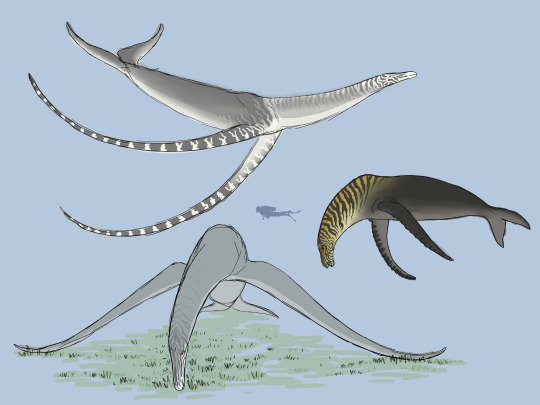
Some sketchy concept stuff that I'm posting because I liked it but couldn't be bothered to refine it into an actual artwork.
These submarine behemoths are the Mermares (Clade Euhippocampiformes), secondarily aquatic descendants of the domestic donkey. The group first appeared around 29 million years post-cataclysm, in the late Nerian stage of the Diluvian period. They evolved from an animal called the Seabra, a descendant of the Donkey which adapted to exploit a niche with, thus far, zero competition - that of a large marine herbivore.
On earth, marine ecosystems are notable for the distinct lack of vascular plant life, a condition caused by a number of factors - most notably the osmotic stress caused by the saltwater. Most photosynthesis is carried out by algae. On Spero, however, things are different. Because Spero's oceans were generated relatively recently, from extraterrestrial ice particles, there just hasn't been enough time for erosion and the water cycle to deposit dissolved minerals in the water. As a result, Spero's seas are made of freshwater - a much more tolerable condition for most plants, and thus the diversity of marine vascular plants is much, much higher than on earth. Also, due to the flatness of the flooded landscape and lack of any real tectonic features, enormous swathes of the seabed lie within the photic zone, less than 200 meters from the surface. Thus, endless expanses of marine grasslands - the "seagrass prairies" - extend from the shore, often for hundreds of miles before the water finally gets too deep for photosynthesis to occur.
All of this plant life is an extremely attractive prospect for herbivores, and it was likely what drew the ancestral Seabra to forage in shallow coastal meadows in the first place. But as the oceans got deeper and life adapted, the Seabra had to adapt in kind - their hind legs rotated backwards to act as a pair of propulsive flukes, their forelimbs developed into steering flippers, and their nostrils retreated to sit on their foreheads.
One notable feature of the Mermares is hyperphalangy, a condition where the fingers have too many bones. It's very common in large marine tetrapods in Earth's history - whales and dolphins, Ichthyosaurs, Plesiosaurs, and Mosasaurs all exhibited hypoerphalangy to some degree - and seems to be associated with the specialization of the limbs into flippers. We would expect to see similar patterns in marine lineages on Spero. What's unique about the Mermares, however, is the sheer number of extra phalanges in the finger; at least fifteen in the shorter-finned species, and more than thirty in the longest-finned forms. And because Mermares - being equids - only possess one digit per limb, the result is a single long chain of flat, squarish bones which, in some cases, can reach over forty feet long - the longest arms ever to exist.
These ridiculous appendages produce a lot of drag and are merely adequate for steering and stabilization. So why do the Mermares have them?
The answer is that they're weapons. And particularly devastating ones, at that.
Mermares use their flagellating flippers as bludgeons, against both predators and conspecifics. The flippers are connected to powerful neck muscles and can be swung forward with impressive force; combined with a well-timed twisting of the giant horse's torso, the huge flippers can impact hard enough to shatter bone and pulverize flesh. The flippers themselves do not escape unscathed, and older individuals often have scarred or mangled flipper-tips from numerous battles over the years; but it's a small price to pay for survival.
When not being used against their enemies, the flippers may be folded back against the sides of the animal to reduce drag, or used as props to keep the animal's belly up off the seabed when feeding. Mermares spend up to 18 hours per day grazing, using their long neck to crop aquatic grasses and other vegetation in a wide arc without moving their bodies and occasionally dipping up to the surface to breathe. Mermares are keystone species in the seagrass prairies; as hindgut fermenters, they are not as efficient at processing plant matter as ruminants like goats, and produce large amounts of nutrient-rich dung which acts as fertilizer for the meadows and helps keep the environment productive. The dung also acts as food for a variety of fish and invertebrates.
Let's look at some of the Mermare's diversity, shall we?
Drepanarion (center right)
One of the smaller Mermares, Drepanarion nonetheless grows to nearly 12 meters (39 feet) long. It is immediately recognizable by the bold black-and-yellow striping on the heads and necks of the stallions, and by the tall, narrow nuchal crest which extends from the withers and makes the stocky body look even more powerful. Unlike most other Mermares, which live in small groups of less than ten individuals, Drepanarion can be found in herds of over a hundred in the seagrass prairies of the Savanian (41 - 50 million years post-cataclysm). These nomadic throngs graze patches of seagrass nearly to the roots before moving on, giving the ecosystem time to regrow before returning in a few years' time. Drepanarion exhibits the most extreme sexual dimorphism of any Mermare, with stallions being both larger and more brightly coloured than mares; during the annual rut, males will fight each other in brutal bludgeoning matches to establish dominance and secure mates. To this end, they have some of the most extreme flipper anatomy of any Mermare; though not especially long (indeed, they have the shortest flippers of any derived genera), each phalanx bone has a protruding bony tubercle on the anterior edge which extends into a keratinous knob. These knobs both protect the flipper during combat and focus the force of the blow into a smaller area, dealing more damage.
Hipposeidon (bottom left)
First appearing in the early Imberian (50 million years post-cataclysm), Hipposeidon is the largest of all Mermares and, indeed, the largest animal ever to exist on Spero, with stallions regularly reaching over 24 meters (80 feet) long (mares are slightly smaller). Extremely large specimens may even reach 30 meters (100 feet), although this is rare. This ludicrous size - nearly rivaling even the mighty Blue Whale of Earth - is possible only due to the sheer abundance of its food. Hipposeidon appears at the height of the seagrass prairie's extent, and can pack away almost 900 kilograms (1900 pounds) of seagrass per day. This superlative food requirement has important consequences for Hipposeidon's behaviour; this animal is migratory. Seagrass prairies are extremely productive ecosystems, but nonetheless Spero is a seasonal world; as the summer growth gives way to the winter die-back, the greatest of the Mermares must migrate across the equator to seek out a continuous food source to fuel its immense bulk. In this way Hipposeidon experiences a perpetual summer, interrupted only by the biannual migration from north to south and back again. Female Hipposeidon are pregnant for about one year, timing the birth of the single large foal with arrival to the feeding grounds; the six-meter-long foal enjoys a long childhood nursing and playing in shallow summer waters, gathering strength before making the long swim across the barren tropical zone to pastures new.
Bathypegasus (top left)
The last and possibly the weirdest of the great Mermares, Bathypegasus is the only member of the clade which is not a grazer. Instead, it is a specialist feeder on pelagic, free-floating ferns. These ferns are a seasonal bounty, growing in huge numbers in the tropical summers of the late Imberian (60 million years post-cataclysm), where the planetary ring system shades out large portions of the planet for half the year. A close relative of Hipposeidon, Bathypegasus has left its ties to the seabed behind, becoming a fast, powerful swimmer which spends most of its life far above the sea floor. Its flippers have adapted to be even more ludicrously long - the longest forearms of any animal, ever, with each one measuring nearly 14 meters (45 feet) in length and each containing at least 35 individual bones. No longer used to prop the animal up off the seabed, these whiplike flippers are narrow and streamlined and can be whipped through the water at speeds of nearly 20 meters per second (that's over 40 mph) - the most extreme weaponry of any Mermare, and used to great effect against predators. Bathypegasus, like Hipposeidon, is migratory, following the blooms of pelagic ferns across Spero's oceans. Thanks to this midwater diet it is the only genus of Mermare to survive past the mid-Imberian extinction, when rising sea levels and steepening coastal slopes caused the seagrass prairies to disappear. Bathypegasus finally died out in the Ultimoxerian stage, around 75 million years post-cataclysm, the last and weirdest of the giant marine horses.
#spec bio#spec evo#speculative biology#speculative evolution#Vicis Aeternum#Spero#seed world#equid#donkey#they're like if a whale and a horse had a baby and that baby was somehow also a diplodocus
844 notes
·
View notes